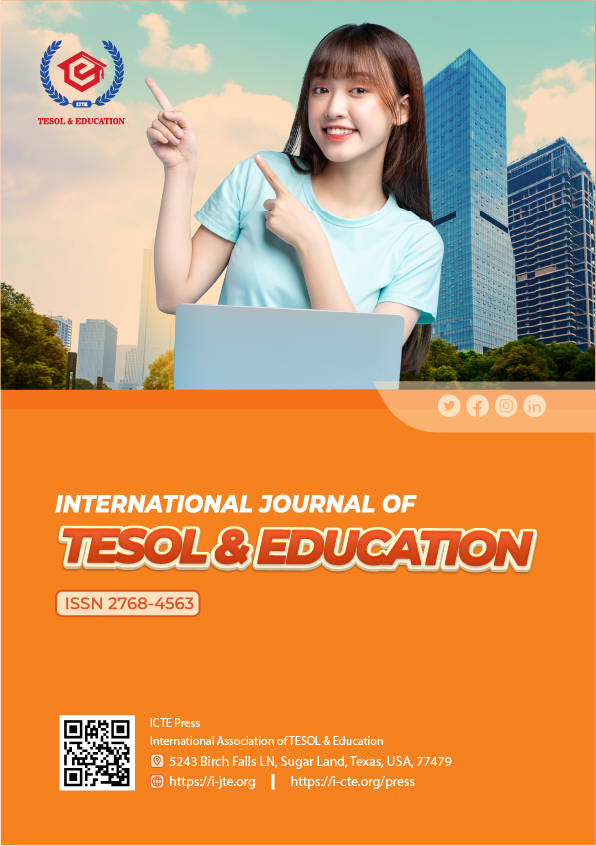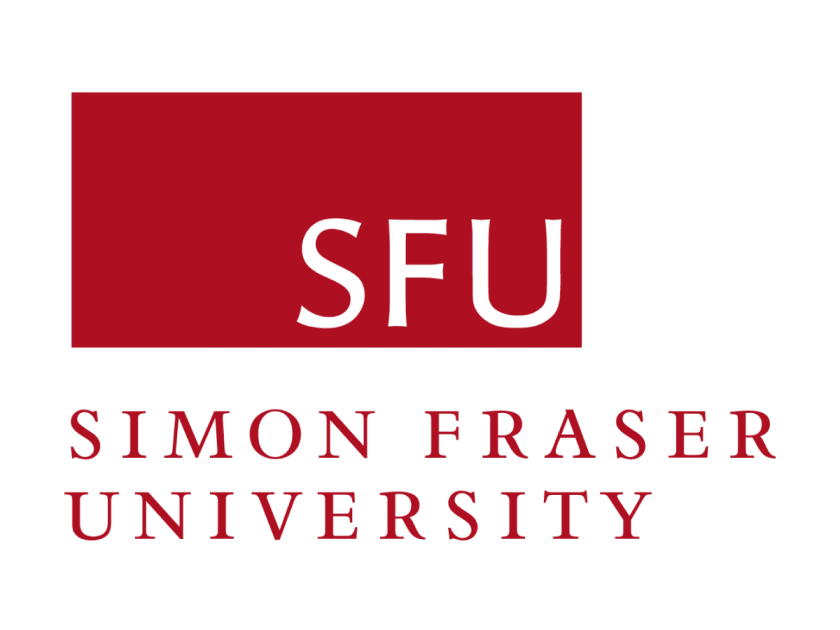The Effects of English Films on Learning English Speaking Skills: A Case Study at a Private University
DOI:
https://doi.org/10.54855/ijte.25535Keywords:
English films, English speaking skills, motivation, language learningAbstract
While using films in English language learning is not a new idea, there is limited research on how films specifically affect speaking skills in EFL university contexts. The present study aimed to investigate the impact of English films on students’ speaking performance. Conducted at a private university’s English department, the research involved 112 English majors for a survey and semi-structured interviews with four students and four teachers. This study was conducted with a mixed-method approach to explore how much English films enhanced the speaking skills in terms of vocabulary and pronunciation, while improvements in fluency and confidence were reported to a lesser extent. Some challenges were identified, consisting of difficulty understanding unfamiliar accents, fast-paced dialogue, and cultural references. Both students and teachers had positive attitudes toward using films to improve English speaking skills, and offered implications that well-chosen film materials can enrich speaking instruction and encourage students to move beyond the traditional learning approaches.
References
Albiladi, W. S., Abdeen, F. H., & Lincoln, F. (2018). Learning English through movies: Adult English language learners’ perceptions. Theory and practice in Language Studies, 8(12), 1567-1574. http://dx.doi.org/10.17507/tpls.0812.01
Bahrani, T., & Tam, S. (2011). Technology and language learning: Exposure to TV and radio news and speaking proficiency. Kritika Kultura, 17(8), 144-160. http://dx.doi.org/10.13185/KK2011.01707
Bassma, B.N. (2013). The Impact of Using Technology in Teaching English as a Second Language. English Language and Literature Studies, 3(1), 111-116. http://dx.doi.org/10.5539/ells.v3n1p111
Brown, H. D. (2001). Teaching by Principles; An Interactive Approach to Language Pedagogy. TESOL Quarterly, 35(2), 341-342. http://dx.doi.org/10.2307/3587655
Bui, G. T. K. (2020). Students' perception towards using English movies to enhance their English speaking skills. TNU Journal of Science and Technology, 225(12), 85-92. https://doi.org/10.34238/tnu-jst.3387
Ebrahimi, Y., & Bazaee, P. (2016). The Effect of Watching English Movies with Standard. Subtitles on EFL Learners’ Content and Vocabulary Comprehension. Journal of Applied Linguistics and Language Research, 3(5), 284-295. http://www.jallr.com/index.php/JALLR/article/view/394/pdf394
Faqe, C. (2017). The effectiveness of english movie subtitles in vocabulary learning among Iraqi Kurdistan EFL learners. International Journal of Current Advanced Research. 6(3), 2590-2594. http://dx.doi.org/10.24327/ijcar.2017.2594.0053
Fakhrurriana, R., Rahmaddian, A. M., Aunillah, H. N., & Herdina, G. (2024). View of utilizing films in EFL classroom for learning speaking: A study at English major. Indonesian Review of English Education, Linguistics, and Literature . https://doi.org/10.30762/ireell.v2i1.2765
Hidayatullah, M. S. (2018). Improving Students’ Pronunciation through Western Movie Media. Journal al-Lisan. 3(1), 93-111. http://dx.doi.org/10.30603/al.v3i1.381
Islam, W., Ahmad, S., & Islam, M. D. (2022). Investigating the problems faced by the university EFL learners in speaking English language. International Journal of TESOL & Education, 2(2), 47-65. https://doi.org/10.54855/ijte.22223
Ismaili, M. (2013). The effectiveness of using movies in the EFL classroom–A study conducted at South East European University. Academic Journal of Interdisciplinary Studies, 2(4), 121-132. http://dx.doi.org/10.5901/ajis.2012.v2n4p121
Kabooha, R. H. (2016). Using Movies in EFL Classrooms: A Study Conducted at the English Language Institute (ELI), King Abdul-Aziz University. English Language Teaching, 9(3), 248-257. http://dx.doi.org/10.5539/elt.v9n3p248
Khoshniyat, A. S., & Dowlatabadi, H. R. (2014). Using conceptual metaphors manifested in Disney movies to teach English idiomatic expressions to young Iranian EFL learners. Procedia- Social and Behavioral Sciences, 98, 999-1008. http://dx.doi.org/10.1016/j.sbspro.2014.03.510
Mustikawati, A. (2013). The effectiveness of using video in teaching speaking for the eighth- grade students of smp n 1 Manisrenggo (Thesis). Lumbung Pustaka UNY - Lumbung Pustaka UNY. http://eprints.uny.ac.id/id/eprint/25728
Murshidi, G. A. (2020). Effectiveness of Movies in Teaching and Learning English as a Foreign Language at Universities in UAE. United Arab Emirates University, 57(6), 442-450 https://doi.org/10.17762/pae.v57i6.50
Nita, Y., & Dewanti, R. D. (2020). Watching movie everyday can improve the foreign language speaking skill. International Journal of Multicultural and Multireligious Understanding, 7(8), 138-144. http://dx.doi.org/10.18415/ijmmu.v7i8.1828
Nguyen, H., & Terry, D. R. (2017). English Learning Strategies among EFL Learners: A Narrative Approach. IAFOR Journal of Language Learning, 3(1), 4-19 http://dx.doi.org/10.22492/ijll.3.1.01
Nguyen, A. L., & Thai, C. D. (2024). EFL students’ perceptions and practices towards watching English movies in speaking skills development. European journal of alternative education studies, 9(1), 97-149. http://dx.doi.org/10.46827/ejae.v9i1.5335
Parmawati, A., & Inayah, R. (2019). Improving students speaking skill through English movie in scope of speaking for general communication. Eltin journal: Journal of English Language Teaching in Indonesia, 7(2), 43-53.
https://doi.org/10.22460/eltin.v7i2.p43-53
Rahman, N. D., Abu Bakar, A. L., Osman, W. H., & Musa, M. A. H. (2021). The effectiveness of film review in enhancing students’ English speaking skills. International Journal of Education, Psychology and Counseling, 6(41), 23–37. https://doi.org/10.35631//ijepc.641003
Rayasa, R. (2018). The Use of English Movie to Enhance Tenth Grade Students’ Pronunciation at SMA Angkasa 2, East Jakarta. Journal of English Teaching, 4(2), 118-131. https://doi.org/10.33541/jet.v4i2.835
Sherman, J. (2003). Using authentic video in the language classroom: Cambridge handbooks for language teachers. Cambridge University Press.
Shing, S. R., & Yin, L. K. (2017). Using films to teach speaking in the ESL classroom. Selangor Humaniora Review, 1(1), 61-70. http://ir.unimas.my/id/eprint/36910
Tran, T.T. L. (2022). An Investigation into the Causes of Students' Anxiety in Learning English Speaking Skills. International Journal of TESOL & Education, 2(3), 183-196. https://doi.org/10.54855/ijte.222312
Truong, L. B., & Tran, L. T. (2013). Students’ intercultural development through language learning in Vietnamese tertiary education: a case study on the use of film as an innovative approach. Language and Intercultural Communication, 14(2), 207–225. https://doi.org/10.1080/14708477.2013.849717
Yudar, R. S., Aditomo, D. T., & Silalahi, N. S. (2020, February). Movie as a helper for students' pronunciation in speaking skill class. Jurnal Universitas Lancang Kuning, 2(1), 15-19 http://dx.doi.org/10.31849/elsya.v2i1.3684
Downloads
Published
Issue
Section
License
Copyright (c) 2025 Ho Minh Hoang, Le Thi Ngoc Diep

This work is licensed under a Creative Commons Attribution 4.0 International License.
The copyright of all articles published in the International Journal of TESOL & Education (ijte) remains with the Authors, i.e. Authors retain full ownership of their article. Permitted third-party reuse of the open access articles is defined by the applicable Creative Commons (CC) end-user license which is accepted by the Authors upon submission of their paper. All articles in the ijte are published under the CC BY-NC 4.0 license, meaning that end users can freely share an article (i.e. copy and redistribute the material in any medium or format) and adapt it (i.e. remix, transform and build upon the material) on the condition that proper attribution is given (i.e. appropriate credit, a link to the applicable license and an indication if any changes were made; all in such a way that does not suggest that the licensor endorses the user or the use) and the material is only used for non-commercial purposes.
Authors retain copyright and grant the journal the right of first publication with the work simultaneously licensed under a Creative Commons Attribution 4.0 International License that allows others to share the work with an acknowledgment of the work's authorship and initial publication in this journal.
Authors are able to enter into separate, additional contractual arrangements for the non-exclusive distribution of the journal's published version of the work (e.g., post it to an institutional repository, in a journal or publish it in a book), with an acknowledgment of its initial publication in this journal.











